25 Years After Launch, Original M5 Still Stirs The Soul
"How would you like to drive a 1988 M5 up Highway 1?"
That wasn't a call I was expecting, especially in the late summer of 2010. As far as I was concerned, any car from the 1980s still on the road was sure to be showing a few hundred thousand miles, springs coming through the seats and air conditioning blowing warm.
However, BMW North America was on the other end of the phone, and the vehicle we were discussing had been pulled out of a factory museum on the East Coast and shipped to California in a covered truck. Not only did it have low miles, but this unique model was in near-mint condition.
The 1988 BMW M5 is special in more ways than one. In addition to being the first-generation M5, its production was extremely limited and each and every copy sold in North America was jet black with blacked-out trim. And there was the powerplant... BMW had essentially dropped the M1's 24-valve 3.5-liter racing engine under the hood.
You can guess what my answer was.
Continue reading...
1988 BMW M5 – Click above for high-res image gallery
"How would you like to drive a 1988 M5 up Highway 1?"
That wasn't a call I was expecting, especially in the late summer of 2010. As far as I was concerned, any car from the 1980s still on the road was sure to be showing a few hundred thousand miles, springs coming through the seats and air conditioning blowing warm.
We all have a short list of favorite vehicles that most will never see, let alone drive.
However, BMW North America was on the other end of the phone, and the vehicle we were discussing had been pulled out of a factory museum on the East Coast and shipped to California in a covered truck. Not only did it have low miles, but this unique model was in near-mint condition.
The 1988 BMW M5 is special in more ways than one. In addition to being the first-generation M5, its production was extremely limited and each and every copy sold in North America was jet black with blacked-out trim. And there was the powerplant... BMW had essentially dropped the M1's 24-valve 3.5-liter racing engine under the hood.
You can guess what my answer was.
Continue reading...
Photos copyright ©2010 Michael Harley / AOL
The E28 M5 wasn't the first of BMW's "M" cars. That credit goes to the M1, revealed to the public at the Paris Motor Show in 1978. A thinly-disguised racing car built in a limited quantity for homologation, the M1 was sold to the public from 1978 through 1981. It was powered by a then-advanced 24-valve 3.5-liter inline-six (the M88/1) complete with six individual throttle butterflies. Without U.S. emissions equipment, the engine was rated at 273 horsepower and later turbocharged racing versions would make upwards of 850 hp.
With success on the track, BMW was looking for another street application for its race-proven powerplant. It didn't take long for BMW to fit a slightly modified version of the M1's engine (the M88/3) into its 6 Series (E24) platform in 1983, creating the first M6 (its official name is the M635CSi, but it was called simply an "M6" in the States). The engine, and other accompanying performance upgrades, transformed the large touring coupe into a bona fide European sports car. When it finally arrived in the U.S. for the 1987 model year, the M6 was fitted with a variant of the M88/3 called the S38 B35 (it had a lower compression ratio and catalytic converters, among other things) rated at 256 horsepower and 243 pound-feet of torque and came standard with a five-speed manual gearbox. Only slightly handicapped by its emissions equipment, the M6 was clocked at 6.8 seconds to 60 mph with a top speed of 158 mph, and at the time, the M6 earned a spot in Road & Track's "10 Fastest Cars in America" comparison.
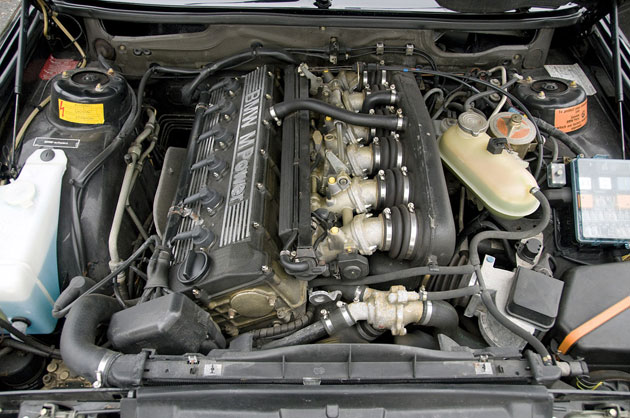
No stranger to high performance sedans (the company had launched its "M535i" based on the "E12" 5 Series platform in 1979), BMW pulled the sheets off the "fastest production sedan on the planet" at the Amsterdam Motor Show in early 1984 – the world's first M5 had been unveiled.
The first-generation M5 was built on BMW's E28 platform, a chassis that had been in production since 1982. Just like the M6, the European M5 was fitted with the M88/3, a 24-valve 3.5-liter inline-six with six separate throttle butterflies. The engine was rated at 286 horsepower and 251 pound-feet of torque, but it would never make it to our shores. Enthusiasts around the world enjoyed the M5 from 1985 through 1987, while Americans drooled from their flagship 535i models – with "only" 182 horsepower.
Things changed in 1987 when BMW finally brought the M5 to our shores. But, it wasn't a carbon copy of its European sibling.
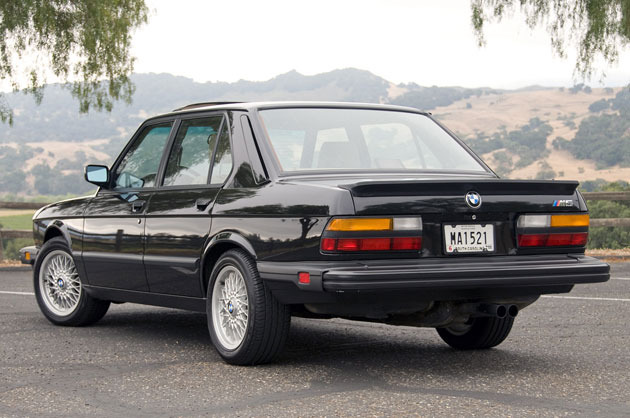
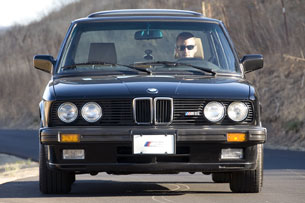
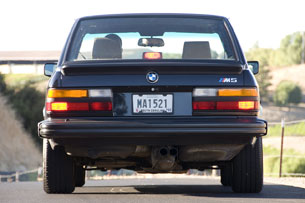
BMW of North America was again forced to make concessions on its M product. Differing headlight, bumper, tire and emissions regulations meant the M5 needed a few tweaks before the Feds would stamp their approval upon its hood (plus, American drivers had their own set of "priorities," when it came to ride comfort and amenities). With the changes in place, and determined to manufacture a large number of hand-built cars in a short period of time, BMWNA tossed the order form into the trash and made each of its models virtually identical.
All North American M5 sedans would have a Black exterior and "Natur" (natural tan) extended leather, while cars assembled for the Canadian market would also be available with black leather upholstery. Standard equipment would include a full leather interior and a long list of creature comforts including power seats, cruise control and an eight-speaker AM/FM cassette stereo system.
Under the hood of the M5 was the same engine fitted to the DOT-certified M6 - the S38B35, identically rated at 256 horsepower and 243 pound-feet of torque. With a standard Getrag "280/5" five-speed manual transmission, and a curb weight of 3,417 pounds, BMW quoted a sprint to 60 mph in 6.7 seconds, ever so slightly quicker than the more expensive M6.
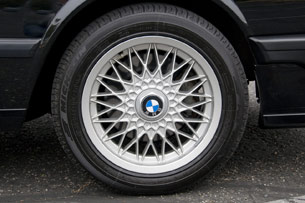
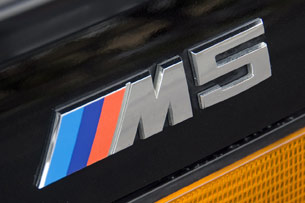
Model enhancements weren't limited to just the cosmetics and powerplant. The suspension was tuned by BMW M to include thicker rolls bars, beefier springs and an automatic load-leveling system. The ABS-equipped brakes were upgraded to vented front rotors, wearing four-piston calipers, that measured 11.8-inches in diameter while the standard wheels were alloy cross-spokes (7.5 x 16) wrapped in 225/50R16 Pirelli tires.
BMW Motorsport wanted its M cars to be subtle, so they limited exterior cosmetic enhancements to a new front air dam and a small M-Technic rear spoiler, both to reduce lift at speed. These items were also offered on the standard U.S. 535is at the time, so BMW blackened the chrome trim ("shadowline") and added a few "M5" badges to help differentiate the flagship model from its lesser sibling.
According to the BMW M Registry, the production figure for the North American 1988 M5 was 1,340 units produced between 11/6/1986 and 11/30/1987 (our test model, VIN 2875362, was built on 11/27/1987). Of the production sent to our shores, 1,238 were built for the United States and 102 for Canada. The final MSRP was $47,500.
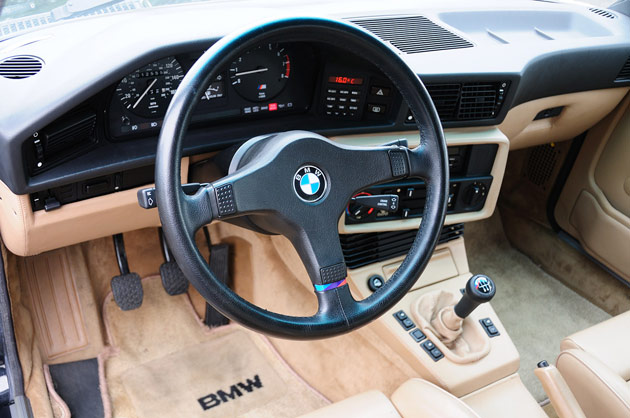
Twenty-three years after it left the factory floor, I'm sitting behind the wheel of a 1988 BMW M5 cruising up Pacific Coast Highway. Unlike most cars with two decades under their floor pan (and the mileage to accompany it), this particular example is in pristine condition having just over 12,000 miles on its odometer. Owned by BMW Classic, the division tasked with restoring and maintaining historic BMW vehicles, and on loan to BMW's press fleet, we've been handed the keys of this museum piece to partake in a caravan heading up the coast from Santa Monica to Monterey.
Full disclosure insists that I admit to having a serious soft spot for the E28 and the M5 in particular, so bear with me. As a teenager, my father had a 1984 E28 533i with a five-speed manual transmission. I learned how to drive stick shift on that car – and I took it to more than a few high school formals. The 533i was quick (181 horsepower), but it was no M5. When the M5 debuted, the posters went up on my wall, but I never had the chance to sit behind the wheel or take one for a spin. Until now...
Inserted into the door slot, a twist of the M5's illuminated key activates all four of the loud servo-driven door locks. The driver door opens smoothly, and I settle my six-foot two-inch frame into the front seat. Immediately, I am overwhelmed by the smell – older BMW's have a very characteristic rustic leathery odor. It's not offensive, but it brings back a flood of old memories that catch me off guard. I like it already.
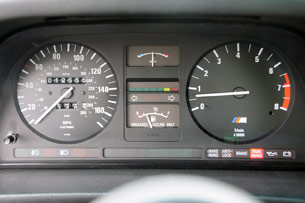
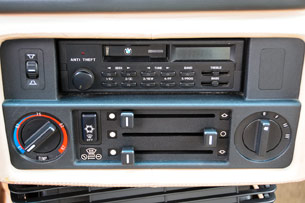
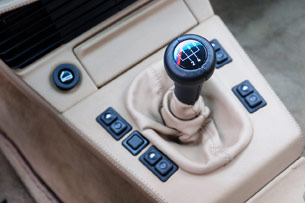
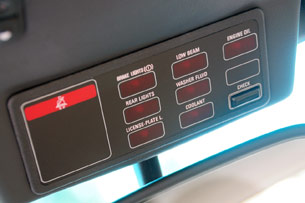
Compared to modern vehicles, the controls on the classic M5 are quite confusing. The instrument panel has the four obligatory gauges (speedometer, tachometer, water temp and fuel level), each easy to read and perfectly placed. But all simplicity stops there. The climate controls are throwback German slide levers (with a diagram on how to achieve optimal defrost), the DIN radio/cassette deck has a slew of small buttons and overly sensitive controls, while the vehicle's on-board computer (aka "OBC") seems to have a miniature calculator interface. While it may have been cutting-edge in the 1980s, it looks retro-confusing today.
The cabin is roomy and comfortable, even for four adults. There are no airbags, minimal safety padding, and the power seats have only a few adjustments. The door panels are featureless (there is only a door handle, armrest and map pocket) and seatbacks are thin. The leather, covering nearly everything but the black plastic dashboard, has held up very well on this car. From the driver's seat, the view outside is commanding. An upright driving position combined with a huge upright windshield, lack of rear headrests and thin roof pillars makes outward visibility excellent.
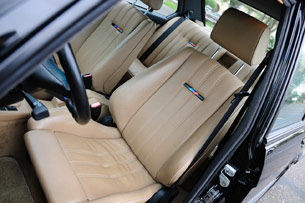
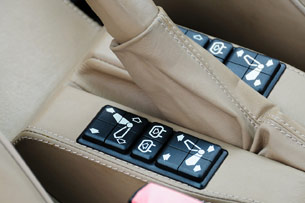
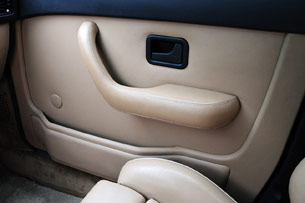
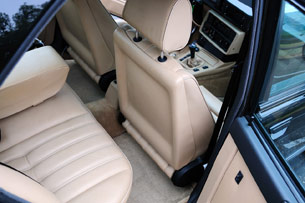
One builds up an incredible amount of anticipation over 20 years, but I had realistically lowered my expectations. What was once the ultimate crème de la crème of sport sedans isn't in a position to defend its title on a day when minivans are running around with more horsepower.
Seat belt snug and with the mirrors properly adjusted, I bring the race-bred 3.5-liter six to life after a two-second twist of the key. Idle is smooth, but slightly inconsistent in its speed, and the exhaust note is prominent even with the doors shut. The clutch is springy, but not overly heavy, making first gear easy to engage.
Around town, the M5 feels a bit lethargic, as the throttle and steering aren't as responsive as systems found on today's cars (blame some old bushings, recirculating-ball steering, 50-series tires and dated engine management systems). The suspension is firm, but there is body roll. The brakes, on the other hand, feel perfect.
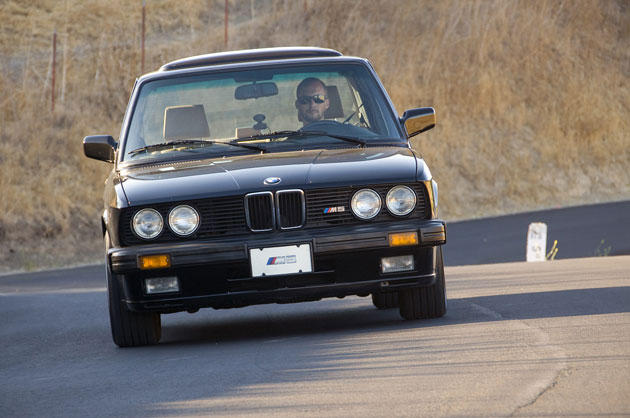
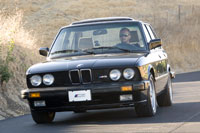
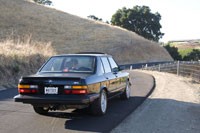
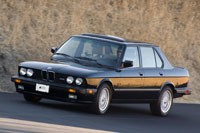
Tooling around town was a job for the ETA-equipped BMW 528e, not the M5, so I head for the hills. After about ten minutes of prodding, I've gained complete confidence in the black sedan. There isn't a whole lot of torque down low, but keep the engine spinning above 4,000 rpm and the power is solid, only slightly eclipsed by the magnificent sound of the six spinning skyward. Thanks to the BMW's near-perfect weight balance and responsive brakes, the M5 was and still is a joy to drive fast. And, it seemed to get better and better the harder I pushed it.
At one point, I was fortunate enough to stumble upon a long stretch of arrow-straight highway. Without a single car in sight, the teenager in me forced my right foot to the floor. The M5 leapt down the road and despite it being as aerodynamic as a coffee mug, the 256-horsepower engine accepted the challenge and slowly spun the speedometer around the dial. With the sedan still impressively stable but running out of straight road, I let off the gas and let it glide...
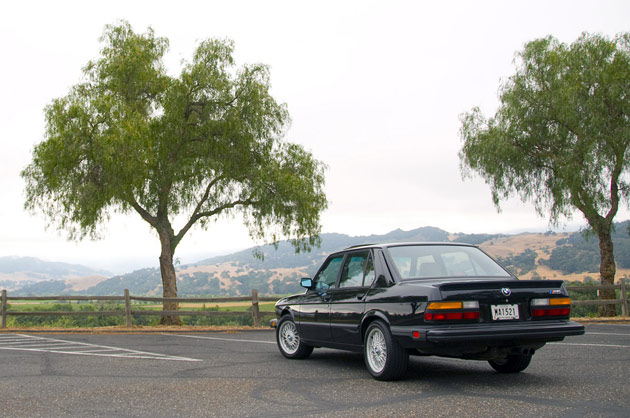
Still coasting, my mind drifted back to the 1980s. I recalled the awe of reading about the fastest sedan in the world in magazines, and then seeing one on the road for the first time. And who can forget that sinister Pirelli tire advertisement, with the M5 hovering above the ground?
Each of us have a short list of all-time favorite vehicles – sadly, most we will never see, let alone drive. I've gratefully been able to pull out my list and put a star and a short comment next to the first-generation M5.
"Exceeded all expectations."
Photos copyright ©2010 Michael Harley / AOL

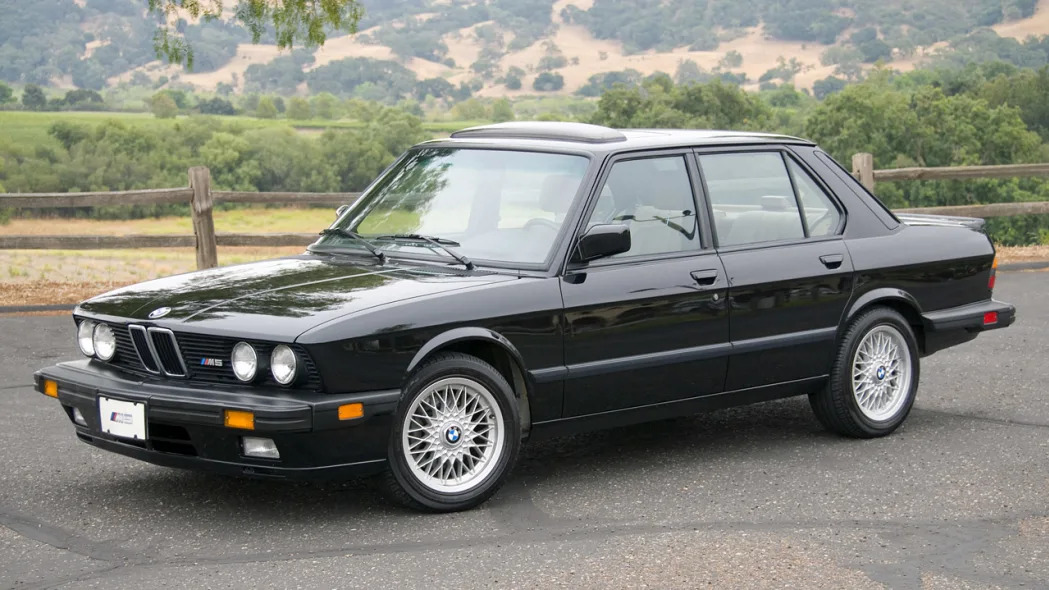

Sign in to post
Please sign in to leave a comment.
Continue